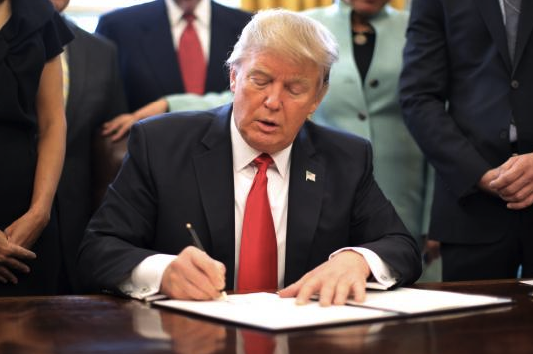Trump’s Butcher Shop
Posted on June 14, 2017

Donald Trump may want to “Make America Great Again” but his proposed 2018 budget contains no plans to make rural America or the nation’s less fortunate great again.
In fact, according to the Trump Administration’s budget blueprint, American farmers, ranchers, and down-on-their-luck citizens must achieve greatness with trillions less in government support so it and Congress can bestow trillion-dollar tax cuts on the already great.
Specifically, the 10-year, Trump budget plan for the U.S. Department of Agriculture (USDA) proposes to:
–slash crop insurance subsidies by 36 percent, or $28.1 billion, by capping subsidies at $40,000 and eliminating the “Harvest Price Option,” a program used across three-quarters of 2016 crop policies;
–lop $191 billion from the Supplemental Nutrition Assistance Program, or SNAP, a 25 percent hit aimed at reducing its 42 million beneficiaries;
–cut conservation spending by $5.7 billion;
–slice Agricultural Research Service funding 25 percent, or $360 million, and shutter 17 research centers;
–wipe out the $447-million Rural Economic Development Program;
–eliminate $263 million from the Agricultural Marketing Service to effectively shut down USDA’s principle export promotion efforts, the Foreign Market Development Program and Market Access Program, just a week after USDA boss Sonny Perdue created the post of undersecretary of trade and;
–require USDA to cut its “discretionary” budget by 21 percent, or another $4.6 billion on yet-to-be-determined program spending.
While almost everyone in Congress with a farmer or a SNAP recipient in their district—that would be 100 senators and 435 House members—declared the Trump budget dead before it sucked its second breath, its ag committee chairmen issued a fence-straddling, three-sentence joint statement that failed to mention even one USDA cut.
House ag boss K. Michael Conaway and Senate ag chief Pat Roberts, both Republicans, did rise like hungry trout to take the SNAP bait offered by the White House. Each promised “to take a look at our nutrition assistance programs to ensure that they are helping the most vulnerable in our society.”
That’s GOP aggie-speak for “SNAP funding will be cut before we cap farm program payments or cut crop insurance subsidies, government commodity export programs, conservation efforts…”
House Ranking Minority member Collin Peterson had a different take on Trump’s budget proposal.
“By all accounts,” noted the Minnesota Democrat who is also an accountant, “this budget is going nowhere on Capitol Hill but it is still a statement of priorities and should be of concern to all rural Americans. Going down this path all but guarantees there will be no new farm bill.”
Also astride that path is another massive Trump cut that would hit every rural community nearly as hard as any farm program cut: the White House’s plan to cut $800 billion in Medicaid spending.
Currently, Medicaid is the nation’s largest health care program with nearly one in four—or 74 million—Americans covered by it. Sixty percent of all Medicaid money goes toward care for either children or the elderly and nearly every rural nursing home and hospital depends on Medicaid payments to cover essential services that would otherwise be unavailable.
Moreover, 18 percent of all rural Americans were enrolled in Medicaid prior to the passage of Obamacare in 2010. Since then another 1.7 million rural Americans have received health care coverage under its expanded Medicaid program. That easily makes Medicaid the key lifeline between rural America and health care.
Despite these steep, program-gutting cuts to farm and rural programs—and, incredibly, the hokey, double accounting the budget proposal contains to make it balance—the Administration sees its budget as a serious starting point to spending talks. Secretary of Agriculture Sonny Perdue said as much May 23 when he noted “It’s my job to implement that plan.”
In fact, no, it’s not.
Perdue’s job is to develop and implement sustainable farm and food policies to ensure all Americans have access to an abundant, safe supply of reasonably priced food and fiber.
That requires a builder, not a butcher.
© 2017 agcomm
Share This